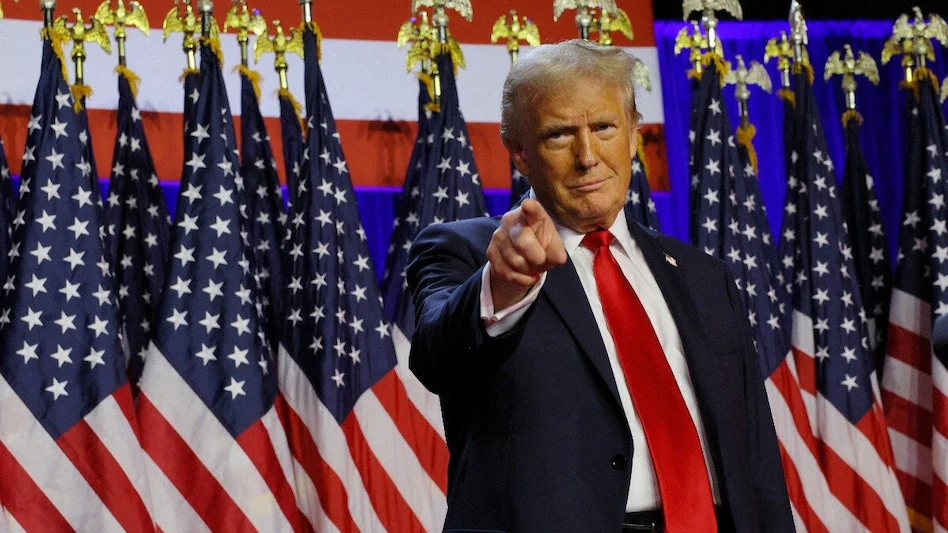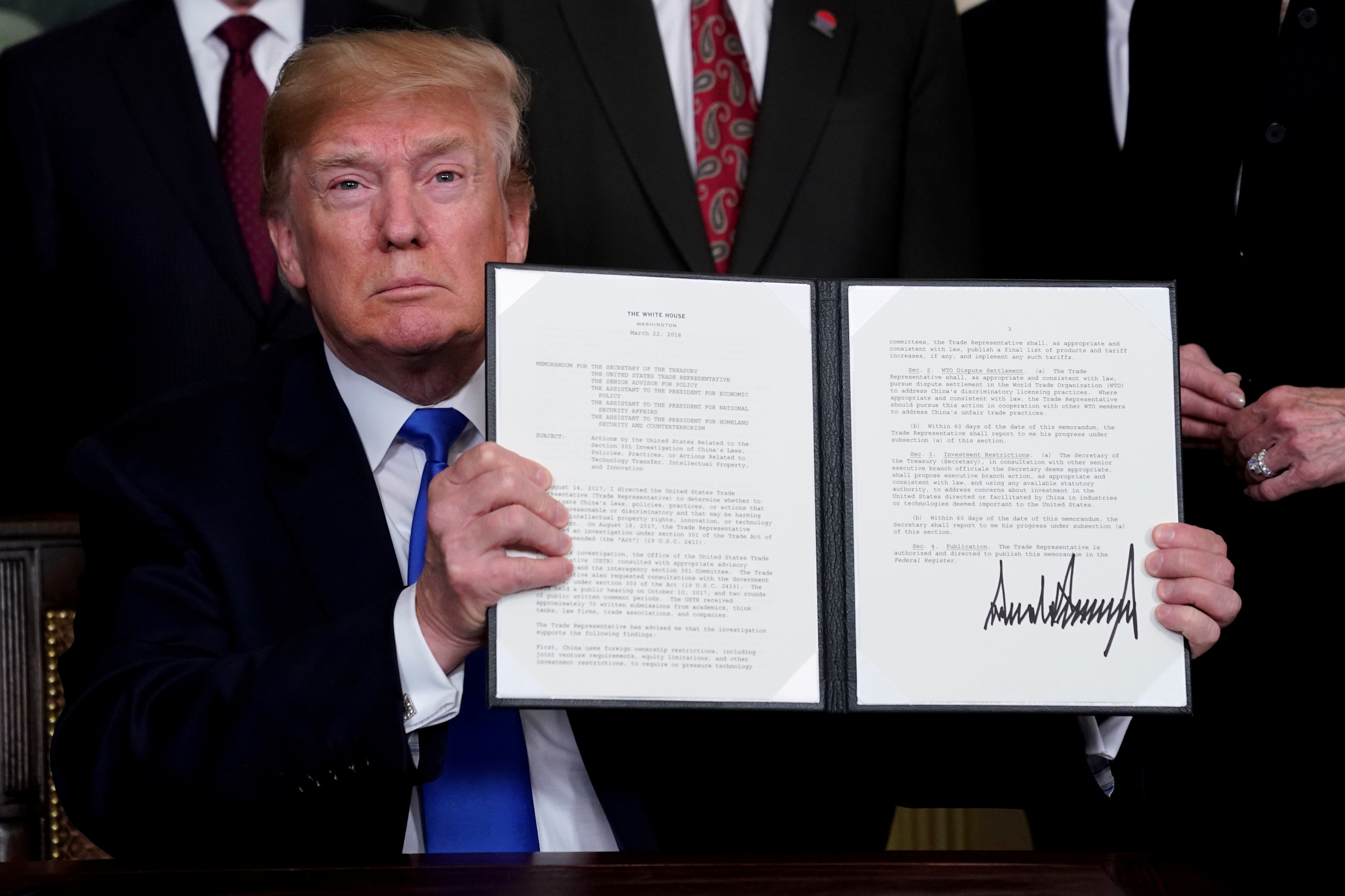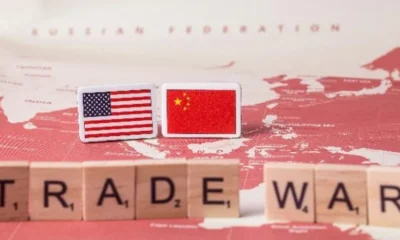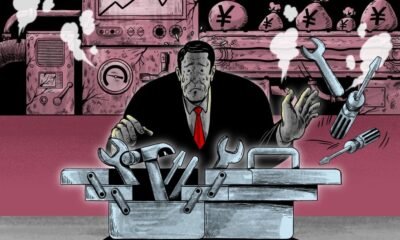Trump Tariffs
Trump’s Tariffs 3-Fold Threat: Inflation, Jobs, And Economic Fallout. A Price Too High to Pay?
Published
11 months agoon

Officials from Mexico, Canada, and China, along with major industry groups, are raising red flags about President-elect Donald Trump’s proposed tariffs.
The announcement, made on Monday, sent shockwaves through financial markets on Tuesday, shaking currencies, bonds, and stocks.
It’s a bold move from Trump but like playing with fire, it risks burning everyone involved and many warn that these tariffs could ignite a trade war with severe consequences for all parties.
A 3-Tariff Threat
Mexico and Canada are more than just neighboring countries; they are deeply embedded in the U.S. economy, particularly in auto production and energy. Decades of trade agreements have made the supply chains seamless, with goods moving back and forth across borders.
Trump’s plan to slap a 25% tariff on Canadian and Mexican imports—and an additional 10% on Chinese goods—threatens to now derail this advantageous position for all involved. And there’s no break for crude oil, a key concern for industry insiders, according to sources close to the matter.
But the response from global leaders was swift. Mexican President Claudia Sheinbaum warned of a possible tit-for-tat trade war, where one tariff leads to another, threatening businesses on both sides. She plans to reach out to Trump directly to discuss the fallout.
Meanwhile, Canada isn’t taking the news lightly either. Bank of Canada Deputy Governor Rhys Mendes pointed out that what happens in the U.S. inevitably affects Canada. “This will impact both economies,” he noted at an event in Prince Edward Island.
Even China weighed in. “No one wins a trade war or a tariff war,” said a spokesperson for the Chinese embassy in Washington.
Here’s the thing: tariffs don’t just hit foreign countries. They’re paid by U.S. companies that import goods, and those costs usually get passed down to consumers. Trump has repeatedly claimed that tariffs hurt foreign nations, but the reality is quite different.
According to Bernard Baumohl, chief global economist at the Economic Outlook Group, these tariffs could backfire. Higher costs for imports could lead to rising inflation and interest rates, ultimately undoing Trump’s campaign promise to lower the cost of living.

Renegotiating USMCA?
The proposed tariffs could violate the U.S.-Mexico-Canada Agreement (USMCA), a trade pact that Trump himself signed into law. In effect since 2020, USMCA has allowed for largely duty-free trade between the three North American countries and is set to expire in 2026.
However, there’s a potential loophole. Warren Maruyama, former general counsel for the U.S. Trade Representative under President George H.W. Bush, pointed out that Trump could declare a national emergency, activating the International Emergency Economic Powers Act, which would make imposing tariffs easier. Historically, challenging actions under this act has been an uphill battle, he added.
Trade experts warn that the tariffs could trigger an early renegotiation of USMCA, well before its 2026 review. This could have major consequences, particularly for the U.S. auto industry. Bernstein analyst Daniel Roeska cautioned that the move would be disastrous for automakers like Ford, General Motors, and the “Detroit Three,” who rely heavily on vehicle imports from Canada and Mexico. European automakers like Volkswagen would also be affected.
Following the announcement, shares of Ford and General Motors dropped sharply, while energy stocks saw mixed reactions. Drilling and refining industry groups raised concerns about higher import costs, reduced oil supply, and potential retaliatory measures that could ultimately harm consumers.
Given that the U.S. depends heavily on imported crude oil—Canada being its largest supplier, delivering over 4 million barrels daily—any disruption to the flow of energy products could undermine North American energy security.
Scott Lauermann, spokesperson for the American Petroleum Institute stressed the importance of maintaining the seamless cross-border flow of energy to ensure U.S. consumer protection and energy stability.
Deutsche Bank analysts predict that these tariffs would cause a temporary spike in U.S. inflation. They’ve already adjusted their 2025 core personal consumption expenditure inflation forecast from 2.6% to 3.7%, up from September’s 2.7%.
In short, the impact of these tariffs would ripple far beyond trade, affecting everything from car prices to energy costs and consumer inflation.

Raise Grocery and Liquor Bills
What does that mean for everyday shoppers? Prices for items like avocados, strawberries, meat, and even liquor could soar. Mexico and Canada are the U.S.’s top suppliers of agricultural goods, shipping nearly $86 billion worth of farm products last year alone. Tariffs could make those imports significantly more expensive.
Hence, if Donald Trump moves forward with plans to impose tariffs on goods from Mexico and Canada, U.S. consumers could see a noticeable rise in grocery and liquor bills next year.
Agricultural economists and industry leaders warn that prices for avocados, strawberries, and other fresh produce could spike, and shortages may hit grocery stores across the country.
Mexico and Canada are the top suppliers of farm products to the U.S., with agricultural imports valued at nearly $86 billion last year, according to the U.S. Department of Agriculture and U.S. Customs data. Tariffs on these imports could trigger significant financial and supply chain disruptions, knowing how much the U.S. relies on its neighbors for food.
Mexico supplies two-thirds of U.S. vegetable imports and half of its fruit and nut imports, including 90% of avocados, 35% of orange juice, and 20% of strawberries. Since 2019, avocado exports from Mexico to the U.S. have jumped 48%, with the U.S. market accounting for 80% of Mexico’s avocado exports, worth $3 billion last year.
Lance Jungmeyer, president of the Fresh Produce Association of the Americas, warned that U.S. consumers will feel the impact immediately at grocery stores and restaurants. “We’ll see fewer items in the produce section,” Jungmeyer said. “Restaurants may have to rethink their menus, using fewer fruits and vegetables or shrinking portion sizes.”
Meanwhile, Alfredo Ramírez, governor of Michoacán—Mexico’s main avocado-producing state—warned of a potential “inflationary spiral.” He said, “Demand won’t drop, but costs and prices will rise, leading to inflation and hitting consumers directly.”
Even margaritas might take a hit. Beer and tequila imports made up nearly a quarter of Mexico’s agricultural exports to the U.S. last year.
U.S. imports of Mexican tequila and mezcal—key ingredients for margaritas—reached $4.66 billion in 2023, a 160% increase since 2019, according to the Distilled Spirits Council of the United States. The group warned that these tariffs would hurt U.S. consumers and lead to job losses in the hospitality industry, which is still recovering from the pandemic.
Farmers are also concerned. Tariffs on Canadian fertilizer imports could push prices even higher, with farmers already paying nearly 50% more than in 2020. “Now is not the time to send shockwaves through the agricultural economy,” said Sam Kieffer, vice president of public policy for the American Farm Bureau Federation.
Pigs and Cattle Migration, A Mixed Bag.
Trump’s tariff plans could also disrupt the migration of more than 1 million cows that are exported from Mexico to the U.S. every year, forming a key part of the American beef supply.
In recent years, U.S. cattle herds have shrunk, which has driven up beef prices. If tariffs lead to fewer cattle and beef imports from Mexico, U.S. producers could stand to benefit, according to Bill Bullard, CEO of the Ranchers Cattlemen Action Legal Fund United Stockgrowers of America.
However, this could also lead to higher meat prices for U.S. consumers. Bullard notes that while tariffs may increase costs, importers and meat processors might be able to absorb some of the extra expenses. “We look forward to the tariffs,” Bullard said. “They will help level the playing field for our domestic producers.”
Further north, tariffs could also impact the flow of beef and dairy cattle, as well as hogs, between the U.S. and Canada, potentially disrupting both countries’ production systems. For example, Manitoba alone exports about 3 million piglets annually to U.S. producers in states like Iowa, Minnesota, South Dakota, and Nebraska, where feed corn is cheaper, according to the Canada Pork Council and Manitoba Pork Council.
Midwestern farmers raise these piglets, fattening them up in feeder barns before sending them to slaughter. Once processed, the pork is distributed to buyers in both the U.S. and Canada.
Trump Trade Wars 2.0
According to the latest USDA projections, the U.S. is expected to run a deficit in agricultural trade of over $42 billion by 2025, partly due to consumer demand for off-season produce and imported alcohol from Mexico.
The threat of tariffs may be a strategic move to gain leverage over Mexico and Canada ahead of the 2026 renegotiation of the USMCA trade deal, said Peter Tabor, an attorney and senior policy advisor at Holland & Knight and a former USDA trade official.
However, Tabor warns that imposing heavy tariffs over time could damage the U.S.’s reputation as a reliable trading partner. This may lead other countries to seek alternative suppliers, leaving U.S. exporters at risk of losing market share.
What’s At Stake?
Negotiation remains the key. Diplomatic channels need to stay open to avoid a full-blown trade war. While Trump’s tariffs might be designed to curb illegal migration and drug trafficking, the economic collateral damage could overshadow any political gains.
At the end of the day, it’s not just about tariffs—it’s about livelihoods, inflation, and the cost of living for millions. If cooler heads prevail, perhaps this potential crisis can be averted. But if not, American consumers may soon find themselves paying a high price, literally and figuratively.
The ripple effects of these tariffs could touch every corner of the U.S. economy—from grocery store aisles to restaurant menus—just as Americans are regaining financial footing.
You may like
-


Taiwan’s ‘Historic’ TSMC Deal, A Win Or The End Of Its ‘Silicon Shield’ As China Threatens? A Jittery Taiwan Watches Trump’s Moves On Ukraine, Wondering, Could We Be Next?
-


A Trade War That Just Won’t Quit. As Trump’s Tariffs Hit, China Stays The Course, For Xi’s Its Business As Usual Strategy
-


Indian Stock Market In Turmoil. Investors In Panic Mode, Is This A Temporary Correction Or The Start Of A Bear Market?
-


America And China’s Thirst For Gold In 2025 Is Draining Other Countries’ Reserves; Here’s Why?
-


China To Cut Inflation Outlook To 20-Year Low, Eyes Fresh Stimulus At ‘Two Sessions’ To Boost Economy
-


Shakeup In The Auto Sector. Mercedes-Benz 15% Job Cuts, Nissan CEO Exit, And Germany’s Make-Or-Break Year
